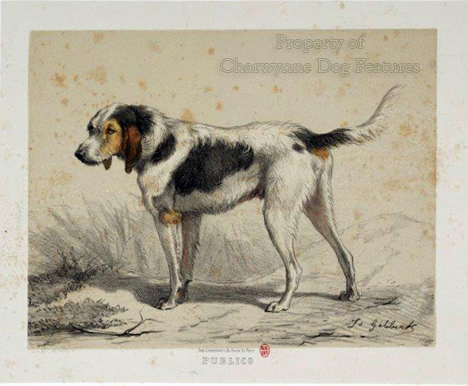582 French Hounds
HOUNDS IN FRANCE
by David Hancock
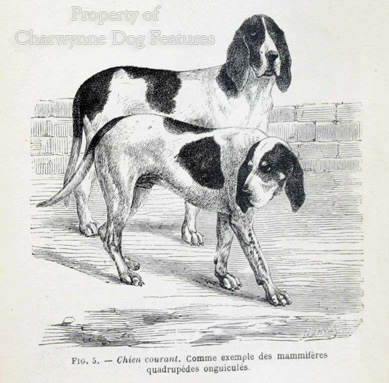
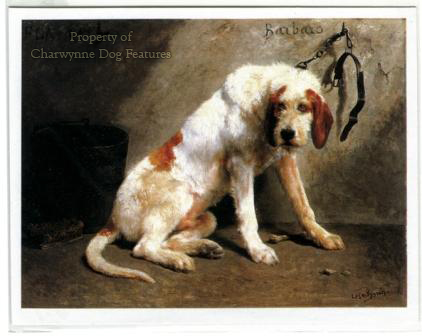
In his introduction to Johnston and Ericson's 'Hounds of France' (Spur Publications, 1979), Dr Emile Guillet, Master of the Hounds of the Rallye Kereol, wrote: "With six or seven hundred thousand hounds, divided into 40 breeds or varieties used by 400,000 hunters, France possesses a national heritage unique in the world." How sad for British sportsmen, especially those who risked their lives to free France just over half a century ago, to note that we have lost much of our sporting heritage, whilst they have retained all of theirs. It's worth noting that with over 8% of the vote, against our 2% of the vote here, the French countryman still has a political voice. It is worth noting too that hunting is enshrined in the laws of the French constitution; we hunt within the law, they hunt by it.
Just as sad is that two of our national assemblies, those of Scotland and Wales, seem almost keener than Westminster to destroy our rural ways. There is a stark difference between say Brittany and Wales in attitudes to hunting with dogs. Yet the historic connections between Brittany and Wales are many; the rough-coated Welsh Foxhound has a distinct 'griffon' look to it. The chestnut Basset of Brittany, or Fauve de Bretagne, now established here, has that griffon look too, with a harsh dense flat coat. Betty Judge has now brought in the Grand Griffon Vendeen and the smaller Briquet Griffon Vendeen, to reinforce the Vendeen Bassets already here. Our favouring of smooth-coated scent hounds has left us just with the Otterhound of our packhounds with a griffon flavour, although I suspect that the French would have named our Airedale a griffon.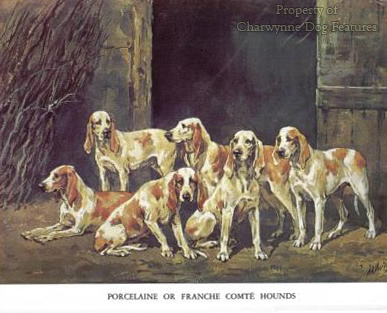
French scenthounds like the quaintly named Billy, the Francais Tricolore and the Poitevin resemble our Foxhound, which has often supplied new blood to the French packs. There has long been exchanges of sporting dogs between Britain and France. Ear length sometimes distinguishes French scenthounds from ours, as the Porcelaine demonstrates. But their native bassets, such as the Artesien-Normand have much shorter ears than our show type of Basset Hound. There are nearly thirty breeds of French scenthound and nearly all of them are little known here. The Vendeen Griffons and the Grand Bleu de Gascogne are now making progress here but most of the others are restricted to France and the Franco-Swiss border country, like the Bruno de Jura, a handsome black and tan breed. There are over 300 packs of hounds in France: 35 staghound, 73 foxhound, 61 roebuck, 114 harehound and 14 packs of boarhound.
Hunting in France continues the ancient and aristocratic attitude to 'venery', the exercise of the art and science of hunting. It is divided into two types, depending on the quarry: la grande and la petite venerie. The former, with quarry of stag, roebuck and boar, is steeped in tradition, with a pageantry and formality passed down from a bygone aristocratic era; it is supported by over 100 packs. The wolf was hunted until its extinction in the 1930s. Most packs of la petite venerie hunt the hare, but 20% hunt the fox. The French breeds of hound have great voices, pace and nose but have been accused of lacking drive and stamina. This has led to infusions of Foxhound blood from here. Some packs are Anglo-Francais, but most have retained the old breeds, preserving the great ringing cry of the classic French scenthound. But just as the blood of our Foxhound has been used to the benefit of French hounds, so too has the blood of theirs been used here.
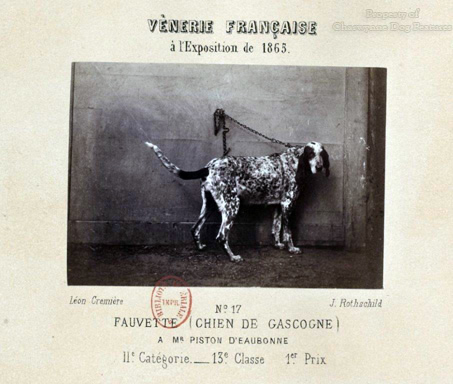
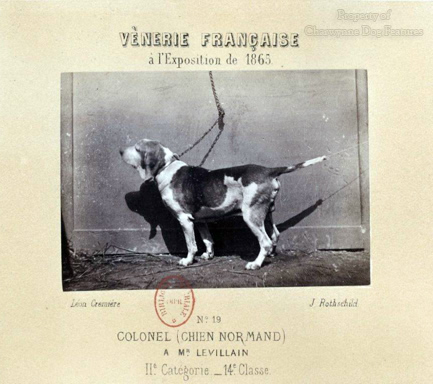
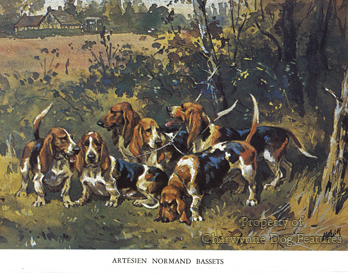
It has been argued that, without the Norman Conquest, we would be without our scenthounds. It has been argued too that all the scenthounds in the world come from either British or French stock, or a blend of the two, as in the United States. Hound expert Sir John Buchanan-Jardine hasargued that the Norman Hound, now extinct as such, acquired the name here of Talbot Hound, citing the words of Gervase Markham, Blaine and TB Johnson (Hunting Directory, 1826) as evidence. Markham wrote that 'The shag-haired Talbot, preferably grizzled, were ...chosen to hunt the fox, badger and other hot scents.' The Bresse breed from Eastern France was brought here to form the basis of Welsh hounds; they were shaggy and grizzled. The Griffon-Nivernais would be today's equivalent.
The St Hubert hounds have also been dubbed Talbots, a name which some believe is an English misuse of Taillebois, the Abbot of St Hubert's Monastery in the seventh century. Because of their scenting prowess, the St Huberts were distributed to the French aristocracy in all parts of France, were bred with local stock but played a major role in the development of scenthounds on both sides of the channel. In early days each local breed of French hound was found in three versions: chiens d'ordre or full-sized,chiens briquets or medium-sized a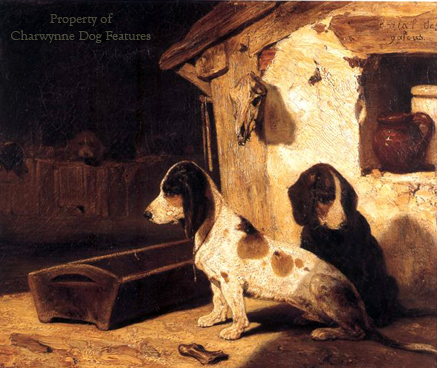 nd chiens bassets. The latter were sub-divided into three sub-types, according to the structure of the foreleg: straight-legged, half-crooked and full crooked. Nowadays we tend to think wrongly of all true Bassets being only the full crooked foreleg version. The contemporary straight-legged English Basset, achieved with the help of Harrier blood, is therefore a quite legitimate Basset, not a modern innovation.
nd chiens bassets. The latter were sub-divided into three sub-types, according to the structure of the foreleg: straight-legged, half-crooked and full crooked. Nowadays we tend to think wrongly of all true Bassets being only the full crooked foreleg version. The contemporary straight-legged English Basset, achieved with the help of Harrier blood, is therefore a quite legitimate Basset, not a modern innovation.
Strangely, the French, with their great passion for hunting, have never developed their own sighthound, although to be fair neither has any mainland northern European country. Lost too are the scenthound breeds of Saintongeois, Levesque, Bresse, Auvergne and Gris de St Louis, (mostly subsumed into other packs, as some pack titles denote). Their best and most carefully bred packs hunt roe deer, one of the hardest animals to run down with hounds, thereby presenting the bigger challenge to the genuine hound man. The sincere affection in France for rural France, together with its distinct way of life, is in stark contrast to urban attitudes here, where ignorance, indifference and even hostility to country traditions prevails. The hounds of France are in safe hands; ours, despite their global respect amongst real hunting people, are threatened - from within. One French pack, very appropriately, enjoys the freedom of hunting near a British cavalry war cemetery; fighting for ancient freedoms is of no great account in Britain these days. RIP British cavalrymen.
